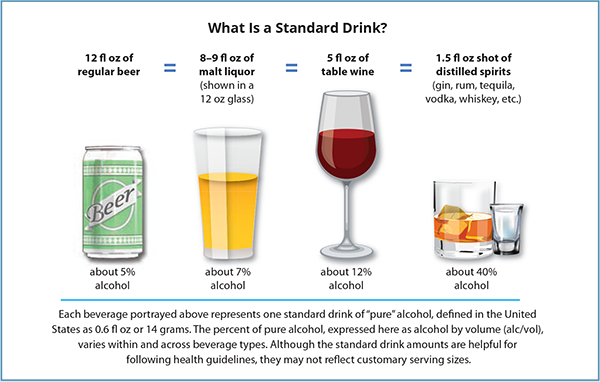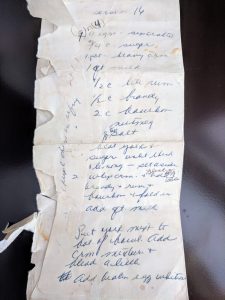Ingredients:
-
-
- 2 parts sugar
- 1 part water
Directions:
- Bring the water to a boil.
- Dissolve the sugar in the boiling water, stirring constantly.
- Once the sugar is dissolved completely, reduce the heat, cover, and allow to simmer for 10 to 15 minutes (the more sugar, the less simmering time).
- Remove the pan from the heat.
- Allow to cool completely and thicken, then bottle.
Note: Do not allow the syrup to boil for too long or the syrup will be too thick once it cools.
To prolong the shelf life of your simple syrup, add a little vodka – usually between a tablespoon and an ounce, depending on how large the batch of syrup is.
Demerara Syrup and Alternative Sugars
Replacing white sugar with demerara sugar (a raw sugar) is a popular alternative because it has an even richer flavor. The drawback to using this light brown sugar is that it will alter the color of you cocktails slightly, but the taste makes up for it. Another option is to use turbinado or brown sugars. Yet another alternative is to use coconut or palm sugar.
If you are a fan of stevia or other alternatives to sugar, feel free to use those to make a simple syrup. They work just as well though there is a bit of a flavor difference which you’re probably used to if you use them regularly. Begin with a small batch of 1:1 simple syrup and see how you like it and make any adjustments from there.
Tip: I have had success adapting Sweet n’ Low syrup for a sugar-loving palate by adding a teaspoon of vanilla extract. It reduced the bitter aftertaste and was actually quite good. This trick may work well with other sugar substitutes as well.
Bar Simple Syrup
The easiest way to make simple syrup does not require a stove and it can be made in minutes. It’s called ‘bar simple syrup’ because it’s a quick way for bartenders to make the sweetener.
Simply combine equal parts (1:1) sugar and water in a bottle and shake it until the sugar is completely dissolved. The result is a thinner syrup (almost water-like) than a syrup that has been reduced by heat.
Simple Syrup Substitutes
There are a few alternatives to using simple syrup. The most popular in the bar are gomme (gum) syrup and agave nectar. Molasses and honey (or honey syrup) are other options, though they should be used selectively in cocktails.
Flavored Simple Syrups
Simple syrup can also be infused with flavor and used in a variety of drinks to add a unique twist. From herbs and spices to fruits and fun flavor combinations, the flavor possibilities with syrup are endless.
The most popular flavored syrup in the bar is grenadine. That’s right, the key ingredient to the Shirley Temple and Tequila Sunrise is little more than a fruit-flavored simple syrup. Combine 1/4 cup sugar, 1 cup 100% unsweetened pomegranate juice, 1/2 lemon (optional).
Sour mix (aka bar mix or sweet and sour) is also very useful in the bar. It is a lemon and/or lime-flavored syrup found in most professional bars. It is often used as a shortcut for adding sweet and sour to many cocktails, including a number of our favorite tropical drinks. Combine one part simple syrup with one part lemon or lime juice (or equal parts of the two fruits).
Any flavored syrup can be just as useful in your drinks and you can put your own spin on any recipe. Here are a few syrups to try out.
Cardamom Simple Syrup – Cardamom is just one of the spiced syrups you can make and it’s surprisingly versatile. Discover how to use this sweetener and find more spiced syrups, including a cranberry spice syrup and a fun black peppercorn syrup.
Cinnamon Simple Syrup – A personal favorite, not a day goes by when a splash of cinnamon isn’t in my coffee. It’s also a fabulous syrup for classic and modern cocktails. The cinnamon can be combined with other flavors like apple, cherry, thyme, and vanilla as well.
Ginger Simple Syrup – The subtle spice of ginger is another great addition to simple syrup and it is also very versatile. It can be added to tea or mixed into cocktails where you might use ginger ale or ginger beer. Again, ginger can be combined with other flavors; vanilla or habanero are just two very fun possibilities.
Chile Peppers in Simple Syrup – Spicy and sweet meet when you infuse hot chile peppers into a simple syrup and it is an easy way to spice up your cocktails. From the jalapeno brown sugar syrup in the Epice Sidecar cocktail to a serrano-mint syrup, some amazing drinks are in your future.
Herbs in Simple Syrup – Herbs like lavender are a popular addition to syrups and they are just as easy to make as any other. Beyond lavender, you will find recipes and drinks for basil, parsley, rose, rosemary, and other herbal syrups as well.
Mint Simple Syrup – Mint syrups deserve their own category because this herb is one we use all the time in the bar. If you want a shortcut to the Mint Julep, use a mint syrup. You can also combine mint with citrus or spicy peppers.
Fruit Simple Syrups – Fruit syrups like this strawberry syrup are a great way to take advantage of fresh fruits and they’re just as easy. Within this recipe, you will also find banana, chipotle-orange, and lychee syrups, among others.
Vanilla Simple Syrup – Vanilla syrup is not the same as a plain syrup (that’s like calling vanilla ice cream ‘plain’) and you will find this one to be a fantastic sweetener for almost any beverage. You can build on the sweet flavor with a little ginger, try almond extract instead of vanilla, or even make a toffee syrup.
Truly Unique Simple Syrups
Once you get the itch to make simple syrups and discover just how easy and fun it is, you will be developing your own unique syrups. While we’ve discussed ‘normal’ flavors up until now, these recipes are anything but normal.
Eucalyptus Simple Syrup – Used to make the very impressive Eucalyptus Martini that is unlike any drink you’ve tasted before.
Lilac Simple Syrup – A floral favorite for spring blossoms, use it in a Lilac Lemon Drop Martini or Lilac Shandy.
Peanut Butter Syrup – This one’s super easy and is required for the fun holiday cocktail known as the Cranberry Peanut Buttered Hot Rum.
Salted Pistachio Honey Syrup – Adding something as simple as pistachios to honey syrup is a fantastic way to liven up the Gunpowder Gimlet.
Sencha Green Tea Simple Syrup – Brew tea, add sugar, and use the syrup to create a fantastic Cucumber-Tea-Ni. It’s brilliant.
Source:


